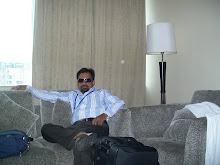Whorl pattern of hair among Dhankut of district Bahraich
(U.P.)
Alok Chantia
It has been suggested on the basis of population and family data that hair whorl is
genetically controlled by a pair of autosomal alleles (Bernstein, 1925; Spuhler, 1951) and
that it can be profitably employed as a population marker.
Data on this trait among several Indian populations have been reported by Biswas
(1938,1951,1953), Kumar (1955, 1968), Das (1959), etc., and they report a great deal of
heterogeneity in its incidence. Biswas (1953) further concluded that there are no
significant sex and age variations in this incidence of hair whorl. Detail discussion on this
trait can be found in Bhalla and Kaul’s (1968) work.
In this paper an attempt has been made to report for the first time frequency distribution
of the hair whorl among the two endogamous groups of U.P. This paper further attempts
to suggest that the clockwise whorl which occur mainly on the left side and anticlockwise
on the right wherever there is the double hair whorl having the combination of
one clockwise and one anti-clockwise. The present findings have been compared with
other populations of Mongoloid and Caucasoid origins, in order to spell out the recial
affinities of the groups under considerations.
Subscribe to:
Post Comments (Atom)

No comments:
Post a Comment